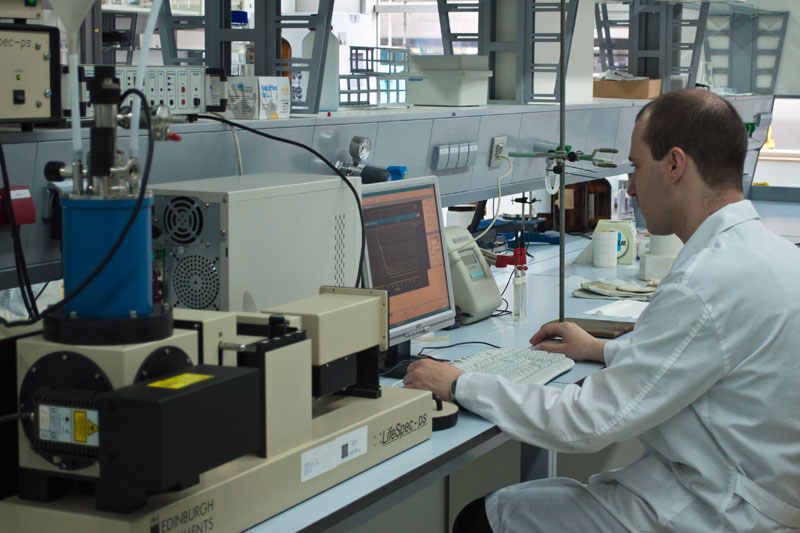For our research, we use a variety of spectroscopic techniques, mainly steady-state and time-resolved absorption and fluorescence electronic spectroscopy, both in bulk and on the single molecule level, and NMR spectroscopy. These techniques allow to study the dynamics of different processes in a wide timescale, from extremely fast processes (investigated by picosecond fluorescence spectroscopy) to extremely slow processes (studied by NMR spectroscopy) and with extreme sensitivity (individual molecules).
Time-resolved electronic spectroscopy
Fluorescence decay

- Time-correlated single-photon counting technique. Picosecond fluorescence lifetime spectrometer LifeSpec-ps from Edinburgh Instruments, equipped with pulsed picosecond diode lasers and LEDs.
Rapid mixing techniques
- Applied Photophysics SX17.MV Stopped Flow Spectrometer. Applied Photophysics RX2000 Rapid Mixing Stopped-Flow Unit.
Single Molecule Fluorescence
- Fluorescence Correlation Spectroscopy (FCS).
- Single Molecule Fluorescence Detection (SMFD).
Steady-state electronic spectroscopy
- Spectrofluorometers Spex Fluorolog 2 and Edinburgh Instruments.
- UV-vis absorption spectrophotometers Varian Cary 3E, Cary 100, Cary 100 BIO and Cary 50.
NMR spectroscopy
- Varian Inova 500 MHz NMR spectrometer.
Cryogenic equipment
- Liquid nitrogen cryostat Oxford Instruments DN 1704, for spectroscopic measurements down to 77 K.
High performance liquid chromatography (HPLC)
- Waters 2695XE HPLC system equipped with Waters 2996 photodiode array detector.



